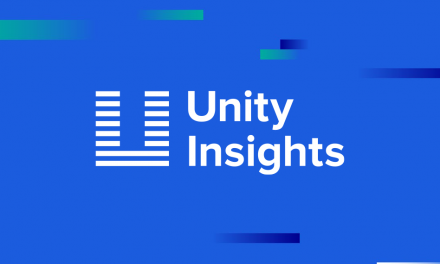Dr Aoife Fordham is one of two clinicians enrolled in the University Hospital Sussex’s Digital Fellow programme. For two days of the week, Aoife works on the programme based in the hospital’s IT department, while also working as a GP trainee for the remainder of the week. KSS AHSN has worked with the IT team at University Hospitals Sussex to create the Digital Leaders Training Programme, an initiative to provide a theoretical basis behind the development, design and delivery of new tech innovations in health care.
We spoke to Aoife to find out more about the Digital Fellow Programme and the AHSN Digital Leaders Training programme.

Hello Aoife, could you start by explaining a little bit about why the Digital Fellow programme was introduced?
Of course, the NHS long term plan was published in 2019, and it contained a strong focus on how building a robust digital platform within healthcare could provide enablers for improving patient care.
What largely came out of the paper was this idea that actually the clinical staff should be active participants in this digital transformation, and that was further enhanced by the Topol Review.
University of Sussex is quite rare in the fact that we already had a really successful digital nursing team which leads on a number of projects throughout the trust, and the Digital Fellow Programme was developed off the merits of that.
Why did you get involved in the programme?
I’ve been qualified as a doctor for six years, working full-time clinical for the first five years. I realised quite early on that you can be the best doctor in the world, but actually the care you provide to your patients is significantly constrained by the resources that you have available to you.
In a 12-hour shift for example I was spending eight hours in front of a computer screen. And actually, the systems I was using on the computer were quite out-dated and lacked intuition, which in turn led to tasks such as reviewing blood results taking far longer than they should.
Because of all this, I became very interested in how we could make that time more efficient, and worked on a project, as a foundation trainee, to create an electronic referral pathway. It was quite simple to design and implement, but it saved us clinicians a huge amount of time and repetition. Time which we could in turn give back to direct patient care.
So, when I joined the University Hospitals Sussex and heard about the digital fellow role, I thought it was a perfect opportunity to split my time so that I could have dedicated hours to be involved in these IT projects.
What’s the benefit of clinicians being involved in the digital transformation?
Clinical staff are in the best position to work with the IT teams to share insights into how tech innovations can be best implemented to maximise their use and improve patient care. Digital Fellows can act as the bridge of communication between the IT team and clinical staff to help aide engagement across every stage of the project.
How have the KSS AHSN Digital Leader sessions supported the Digital Fellow programme?
They are a valuable opportunity once a month for us to deep dive into a core theoretical principle that underpins digital transformation. For example, we’ve learned about the spread and adoption of innovation at a national level, and then we’ve been able to relate that to improve the work of our individual projects regionally. Other sessions have included quality improvement and PMO approaches in the spread of innovation, how to use data to gain analytical insights and evaluation, and storytelling and elevator pitching.
Although the theme was ‘digital’, the content was purposefully broader, to allow transferable knowledge for later quality improvement, leadership and management roles.
And how have these sessions changed the way you approach projects?
The main change I have made since starting the programme is in the way I approach setting project objectives. I now recognise that when you invest in setting clear, structured and realistic objectives, these are more likely to be attainable and ultimately increase the overall success of the project. If you work hard to make sure your objectives are robust, through benefits realisation you can ensure the outputs and outcomes truly meet the defined objectives.
How do you determine what those key objectives should be?
It’s really important to gain feedback from representatives of every group involved in the current process, to understand their interpretation of the current problem, then working with these key stakeholders to set realistic objectives. In essence, get out there and engage with your clinical and non-clinical colleagues and find out what their priorities are then work cohesively to achieve outcomes that work for everyone.
Were there any unexpected learnings in the sessions?
I enjoyed learning about using data analytics to support quality improvement, such as Statistical Process Control (SPC) charts to support better decision making. SPC charts allow for evaluation of success metrics over a period of time, and therefore allow you to correlate performance with the introduction of interventions.
I also enjoyed learning the roles of AHSNs, especially hearing case studies of where innovations devised by clinical staff have led to changes that have significantly improved patient care. The case studies made me realise that really, a lot of our problems are not unique – every trust is having them in some way to a certain degree. It helped me to see that collaborating with other trusts and asking them what they’re doing and learning from their mistakes and their successes is a really good way of improving our own approaches.
Other key learning points would be, when communicating your project: keep your message simple. While you think you’ve honed your message into a perfect soundbite, you can always refine it. And that’s super important when it comes to the development of any project, and is a great discipline to feed back into your key objectives.
What impact do you think the programme has made to you and your Digital Fellow colleagues?
It has definitely provided a theoretical understanding of how we approach our projects, it really gave us time to think about the different elements of our projects.
It was clear that a lot of effort had gone into each session, and they followed a similar structure and flow, which meant that learning built across the sessions.
It was also such a privilege to get to meet so many people at KSS AHSN. I’ve always thought it’s a fascinating organisation, and the Digital Fellow role has been a golden opportunity to learn even more about their work to support the spread and adoption of innovation across the NHS.
I really hope that wherever my career takes me next, we’re able to collaborate in the future.





